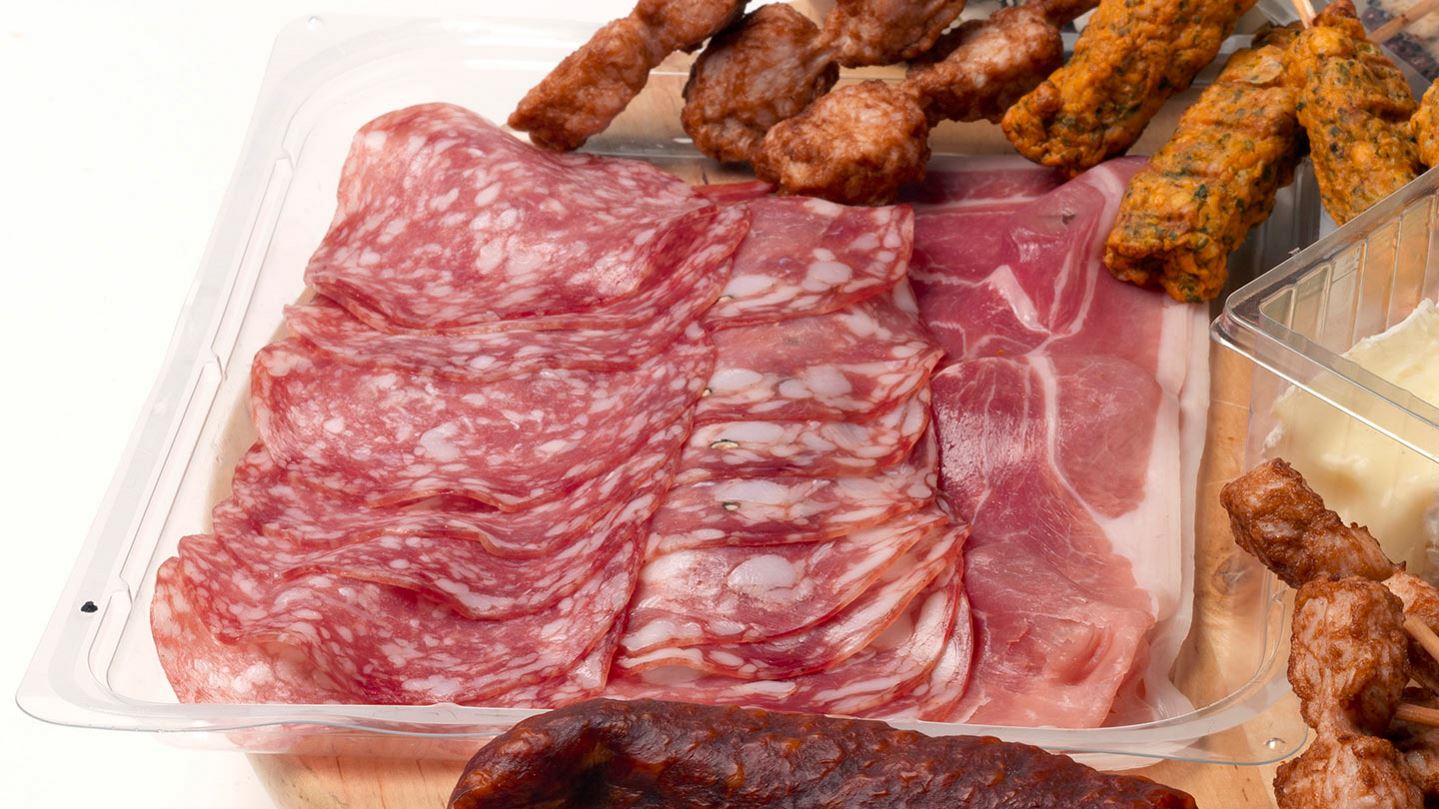
Cooked, Cured and Processed Meat Products
MAP: A proven way to effectively extend the shelf life of your meat products.
Food items: Bacons, Beef Burgers, Black Pudding, Charcuterie, Chopped Pork and Ham, Cooking Sausages, Corned Beef, Frankfurters, Haggis, Hams, Luncheon Meats, Meat Jerky, Meat Slices, Ox Tongue, Pastrami, Pâtés, Pepperoni, Potted Meats, Rillettes, Roast Meats, Salami, Smoked Reindeer, Smoked Venison, Terrines, Wurst Sausages, other items
Recommended gas mixture
30-40% CO₂
60-70% N₂
The gases and mixtures listed above are for general guidance. To identify the optimum gas for your product and process, we recommend you undertake a product trial, with the help of an Air Products MAP gas specialist.
Storage temperature
Legal maximum*: 8° C
Recommended: 0° C to + 3° C
Achievable shelf-life
In air: Cooked and cured meats in 1-3 weeks, salami etc. 3-6 month
In MAP: Cooked and cured meats in 3-7 weeks, salami etc. 4-8 month
Principle spoilage organisms and mechanics
Brochothrix species, Lactic acid bacteria, Enterobacteriaceae, yeasts and moulds, Oxidative rancidity, colour change for cured meats (red/pink to brown/grey/green).
Food poisoning hazards include
Clostridium botulinum, Salmonella species, Staphylococcus aureus, Listeria monocytogenes, E.coli and E.coli 0157.
Typical MAP machines
Retail
TFFS – Thermoform-fill-seal
PTLF – Preformed tray and lidding film
Typical types of package
Retail: Tray and lidding film, Tray inside pillow pack, Pillow pack
Examples of typical MAP materials
Retail
Tray:
• PVC/PE
• APET/PE
• HDPE
• EPS/EVOH/PE
Lidding and/or pillow pack film:
• PET/PVDC/PE
• PET/PE-EVOH-PE
• OPA/PE-EVOH-PE
• OPP/PE-EVOH-PE
• MPET/PE
• MOPP/PE
The principal spoilage mechanism for meat products are microbial growth, colour changes and oxidative rancidity. In cooked, uncured, meat products, the heating process should kill vegetative bacterial cells, inactivate degradative enzymes, and fix the colour. Problems with such products arise primarily from post-process contamination and/or poor hygiene and handling practices.
Some uncooked, uncured, meat products (such as beef burgers and British sausages) will contain sulphur dioxide (often added in the form of sodium metabisulfite). This additive (use of which is restricted to products having a minimum of 6% cereal content) is an effective preservative against a wide range of spoilage mechanisms.
Cured meat products, whether cooked or not, owe their characteristic pink colour to the use of nitrite which interacts with the myoglobin in the meat to form nitrosylmyoglobin. Although this pigment is fairly stable it is prone to oxidative bleaching, especially when exposed to light. Cured meat products should therefore be packaged with the exclusion of oxygen. The addition of nitrite and salt will inhibit most food poisoning bacteria. This inhibition may, however, be compromised in products formulated with reduced levels of salt, nitrite or other preservatives. Caution must be exercised in assessing the potential effects of any changes in products formulation. Simple cooked meats without any added preservatives may be at risk from growth of Clostridium botulinum under anaerobic MAP and incorrect chilled storage.
Meat products containing appreciable levels of unsaturated fat are liable to be spoiled by oxidative rancidity, but MAP with the elimination of oxygen will inhibit this.